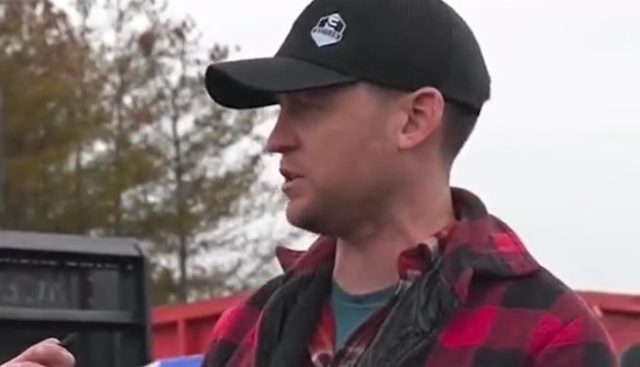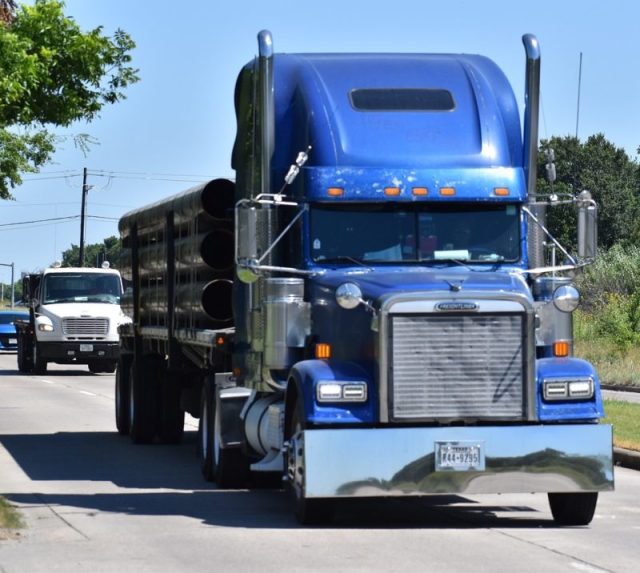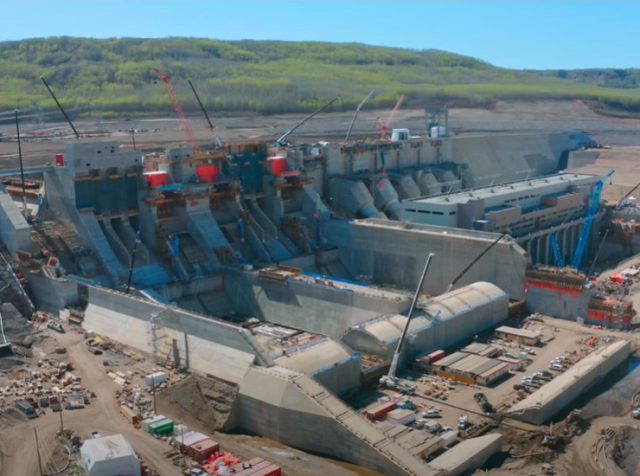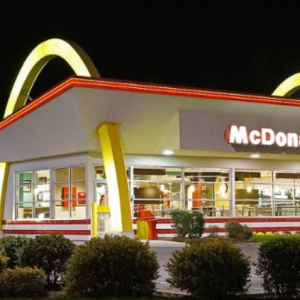A truck driver went viral after sources said he “perfectly dismantled” the electric vehicle narrative, and it only took him two minutes. The only question is, was he right? You decide.

Chace Barber, a truck driver and the founder of Edison Motors, has advocated for a push toward hybrid semi-trucks, as opposed to fully electric, which he has said are a bad idea. In fact, Barber was captured on video explaining the problem with switching semi-trucks and other large vehicles to fully electric, and it only took him two minutes to “perfectly dismantle” the electric vehicle narrative, according to The Blaze.
In the now-widely circulated video, which was recorded during an event showcasing his company’s hybrid truck model, Barber was asked, “Do you ever see yourself going 100% EV?” This led to the trucker explaining how poor infrastructure and inefficient, heavy electric batteries make it nearly impossible to switch semi-trucks and other large vehicles to fully electric.
After the interviewer’s question, Barber immediately answered “No” before reconsidering his response. “I mean, maybe, if battery technology gets better, grid infrastructure gets better,” he said before elaborating on his answer. Motioning to a truck behind him, Barber said, “A logging truck uses about two and a half megawatts of power per day. With extra capacity in the battery, means you need a three-megawatt battery pack. The biggest one is like a Tesla semi, which is like a one-megawatt. So, you need three megawatts to run an electric truck.”
For those who still didn’t understand the problem this presented, Barber continued. “That would mean you would need to pack 50,000 pounds—40,000, 50,000 pounds of batteries—just to do a full day,” he said. The weight of such batteries would not only reportedly cause many issues, but the braking system on the trucks would also need to be immediately and drastically improved in order to increase the stopping power, sources explained.

However, this was far from the only issue Barber saw as presenting a huge problem. For argument’s sake, he suggested we pretend we could get the batteries down to a reasonable weight before explaining we would still face problems with our electrical infrastructure, which he said has not been updated in North America in some time. According to Barber, this has left us with an electrical grid that is nowhere near the level required to power essential vehicles.
“Let’s say we can even get those batteries down to the same weight where it’s reasonable, the grid infrastructure—we haven’t invested in our electrical grid since the 1950s, 1960s, ’70s, like you can give me an example, the logging truck in B.C. [British Columbia], that’s a niche industry. There’s 5,000 logging trucks that haul logs,” he explained. “At two and a half megawatts of consumption per day, that’s twelve and a half gigawatts of power.”

The need for that much power presents its own issues that many don’t realize, according to Barber. “Site C dam has been under construction for the last, oh, I don’t know, 15 years at a cost of $20 billion, and that has a 1.1 gigawatt,” he explained. “So, a $20 billion dam that takes 15 years to build has a 1.1 gigawatt capacity, and logging trucks—just logging trucks alone—are using 12 and a half gigawatts. You would have to flood an area of land the size of Wales to produce that hydropower,” Barber alleged.
“We need a lot to make a fully electric feasible on the North American grid and all that,” Barber concluded. However, the trucker does see a feasible solution as he went on to argue for a hybrid diesel-electric model like the type his company has developed. For those who still weren’t convinced, Barber asserted that a hybrid option was better than making no progress at all in decreasing emissions.

“If you can make it more efficient and you can make it a hybrid and you can reduce your fuel consumption by 50% and you can burn that as a generator, where it’s one RPM, running hot, burning cleaner—well, isn’t a 50-60% reduction in emissions a lot better than investing everything into a fully electric technology that’s not really going to work for 90% of the applications?” Barber asked rhetorically, alleging that many would still be left “burning 100% of the diesel.”
As Chace Barber went viral on social media, he opened a discussion about electric vehicles with some debate over hybrid limitations. However, it seemed that most agreed that he raised valid points about fully electric semi-trucks. Whether one agrees or disagrees with his assertions, having an open discussion where both sides of the argument are discussed freely is important, and that’s a good enough reason to share Barber’s opinions. Let all voices be heard in the discussion, then let everyone form their own conclusions.





